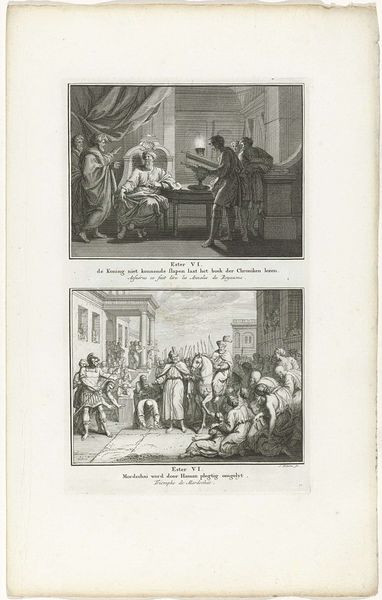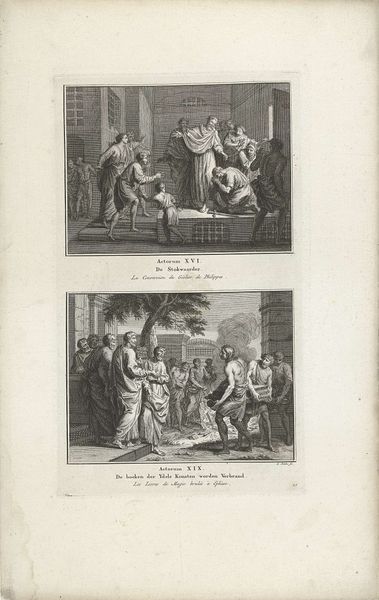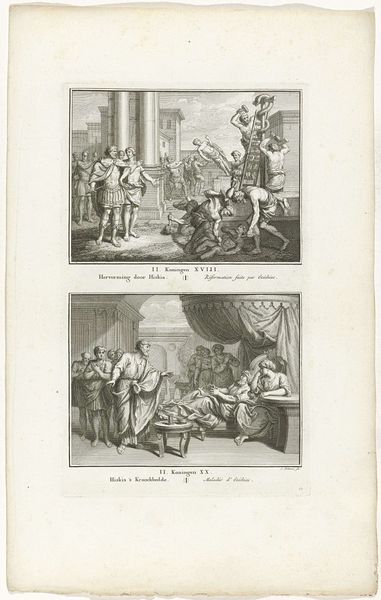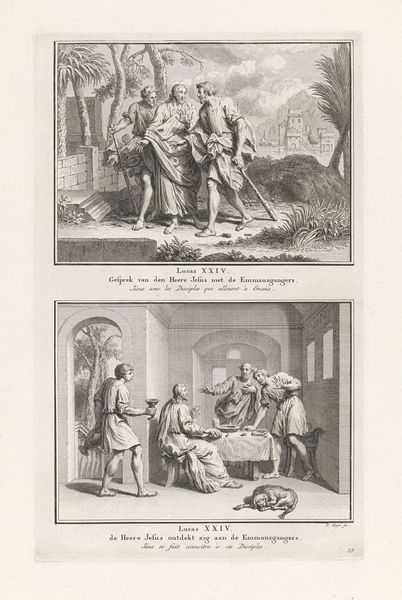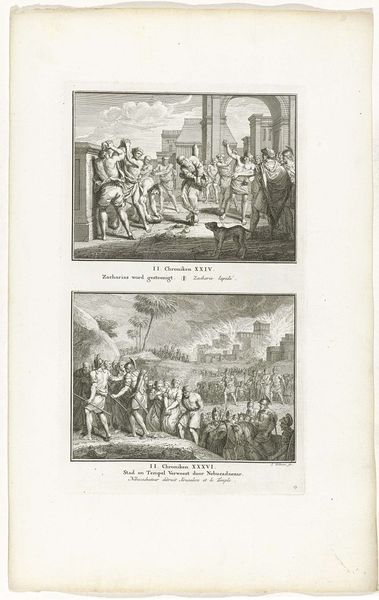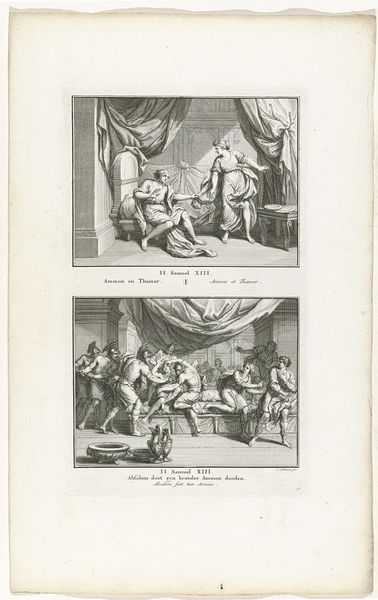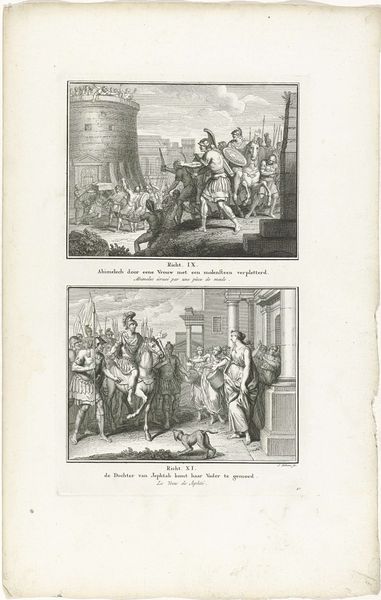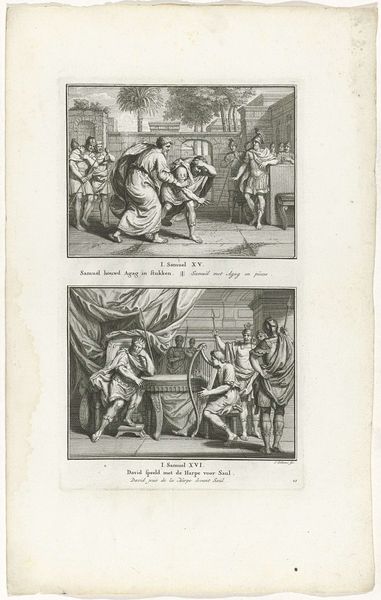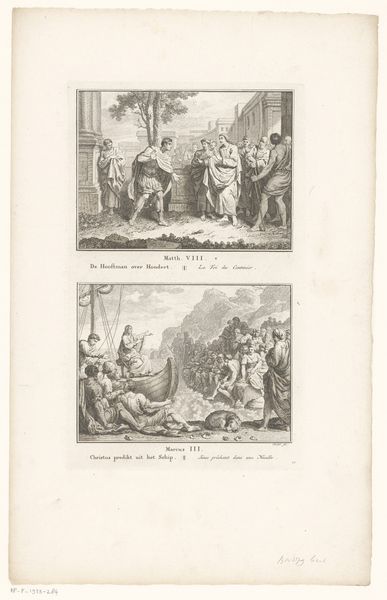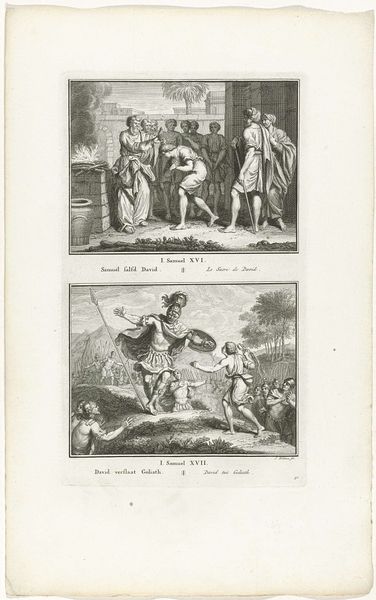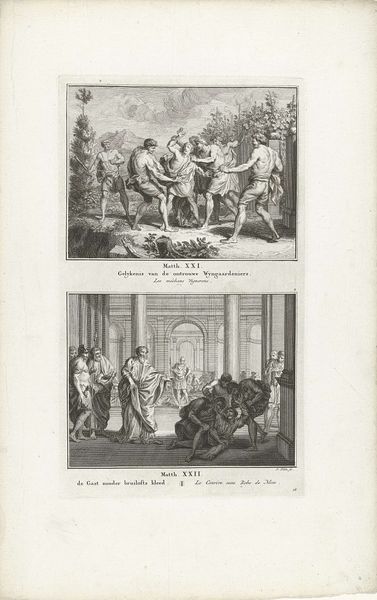
Priester Eli valt van zijn stoel en het beeld Dagon valt ter aarde 1791
0:00
0:00
jacobfolkema
Rijksmuseum
Dimensions: height 330 mm, width 197 mm
Copyright: Rijks Museum: Open Domain
Curator: This engraving, created around 1791 by Jacob Folkema, depicts two scenes from the Old Testament, or rather, it offers two snapshots of stories as visualized by a late 18th-century imagination. It's titled "Priester Eli valt van zijn stoel en het beeld Dagon valt ter aarde" – that’s "Priest Eli falls from his chair and the statue of Dagon falls to the ground." Quite a mouthful, I know. Editor: My first impression is a kind of structured chaos, the stark black and white amplifying the drama in both the upper and lower panels. A domino effect of divine intervention? It looks awfully perilous. Curator: Precisely! The upper scene shows the priest Eli falling upon hearing the news of the Ark’s capture and the death of his sons. The lower half visualizes the Philistine idol Dagon collapsing before the Ark of the Covenant. I find it curious how the composition guides our eye back and forth between those parallel disasters. Editor: Well, the Ark is no ordinary object, is it? For the Philistines, Dagon represented their strength, their very identity as a culture and religion, which perhaps illustrates its function in the narrative. His fall becomes immensely symbolic. We are drawn to Dagon's desecrated figure. Curator: Absolutely. Folkema employs the conventions of Baroque art, albeit within the stricter lines of printmaking. Consider how the figures are positioned to maximize the narrative effect and the dynamic play between light and shadow to underscore the impact of their collapse. Editor: The symmetry of these scenes intrigues me, as if Folkema wants to illustrate how even in victory, the conqueror does not always prevail or fully understand the intangible power they seek to contain. The image acts as a warning, subtly, with the clean precision afforded by an engraving. Curator: It’s about something more significant than just one man, Dagon, and one priest. It's about faith, about the perceived stability collapsing, about the unsettling reminder that history continues in a pattern of fall and redemption. Editor: Ultimately, Jacob Folkema delivers us a compelling tale of faith and cultural collision in this detailed piece—perfect fodder for any historical or theological discussion.
Comments
No comments
Be the first to comment and join the conversation on the ultimate creative platform.
